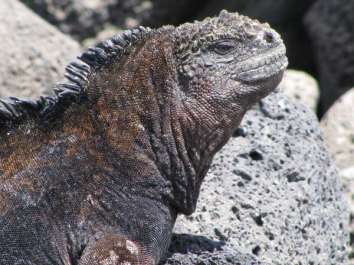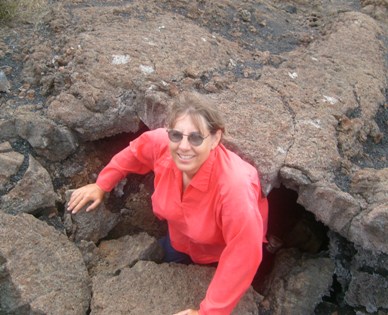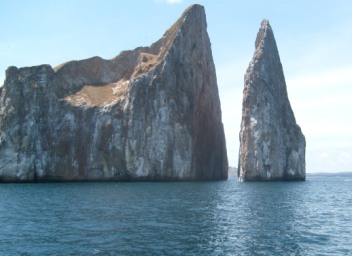Friends,
I made it back home from the most amazing adventure. Here are some highlights from the rest of my trip; you will be hearing lots more over the weeks ahead.
one day, relaxing after a hike, after awhile they all began picking them selves up; one after another they began to orient to the sun to cast shade on their backs and rise up to get air moving beneath.
female's whistle sounds like air blown across a straw. The male call is more of a quack. At another island the eggs were beginning to hatch. Some of the babies seem nearly as big as the parents, while their wings are still stunted. The parents need to care for the young about 5 months. It must take a great deal of food to feed the large nestlings.
-Carolyn
July 12, 2008
Dear Friends and Family,
Greetings from the Galapagos!
We arrived on the island of San Cristobol a couple of days ago. Today we had a glorious adventure. We took a boat to two tiny nearby islands: Lobo Island (Lobo is sea lion in Spanish) and Kicker Rock.
They stopped the boat and encouraged us to dive in before the pod moved off. We were all ready for snorkeling and quickly over the boat. The first thing I noticed was the singing - a very high pitched sound. The dolphins were around us. The water was murky with fine bubbles; they were shadowy forms to my eyes. The stronger swimmers were able to stay with them better. After a bit one came very close, to that point where you feel you can reach out and touch, but in reality it is too far off. I began to take in details as I swam closer. When I spotted the gills, I realized it was a shark passing by. Then 3 or 4 dolphins came by, chasing off the shark. By that time the dolphins moved on and we climbed back into the boat. A bit later we saw the pod again. This time I was willing to stop and get my camera. I used Susan´s lightening technique and took pictures hoping to snap one at the right moment.
The other experiences pale compared to that. We snorkeled with the sea lions and saw many beautiful fish along the rocks. I took pictures with an underwater camera; will see if any come out. It is amazing to see the sinuous bodies of the sea lions glide past, literally in touching distance. If you stay and play, you might engage them in a game of fetch. I was too taken with the variety of fish to stay and play.
Adios,
Carolyn Hollis





